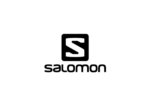 Salomon
Salomon
Salomon was riding a string of ridiculously successful product introductions when the brand introduced its first ski in 1989. The monocoque shell was the big story, creating such a groundswell of demand that all the ski brands that came before had to re-tool to some kind of cap ski design or risk a swift, painful death.
Salomon followed up the ski launch a few years later with an idea that continues to reap rich rewards for all brands to this day. Salomon declared that experts didn’t possess a single, monolithic skill set, but that they could be divided into 3 fields, Equipe, Force and EXP, each with its own rationale for an expert-level – and most importantly, expert-price – product. This was the moment when the market began to invert its product pyramid, to go from a base of a gazillion, low-cost package skis to a foundation built from expert skis in a minimum of 7 iterations from every supplier.
To put things in perspective, Salomon’s initiation of multiple expert ski genres has been as beneficial to the entire ski market over time as the career of Tiger Woods has been to the golf world.
Eventually, Salomon’s magic touch wore off. It looked down its Gallic nose at the arriviste shaped skis, raising eyebrows by being behind the trend for once. Its transition away from rear-entry boots wasn’t smooth, although it’s safe to say that rocky era is well behind it. Although the brand would have star products again – X Scream and Pocket Rocket come to mind – it didn’t always display its formerly flawless feel for the market. Important launches such as the BBR failed to get off the ground.
This led to a period of retrenchment during which Salomon relied on the lower cost of monocoque manufacturing to pursue a price-advantage strategy. Consumers responded well to the easy-skiing style of the Q series, but opinion leaders shied away from skis they perceived as too soft.
This leads us up to last season, when Salomon unveiled the QST series of off-trail-oriented skis. With a weave of carbon and flax, Salomon finally found a formula for a lightweight ski that didn’t flop around on hard snow like a carp on a hot dock. With the QST series, the brand bid “adieu” to monocoque, building these models instead with square sidewalls from tip to tail. The top 3 QST’s, the 118, 106 and 99, also insert a segment of Titanal underfoot so the edge won’t wash out in ratty terrain.
The QST 106 merits singling out, for it perfectly embodies what the Big Mountain genre was created to provide: make off-trail skiing instinctive instead of a struggle.
www.salomon.com Download Catalog